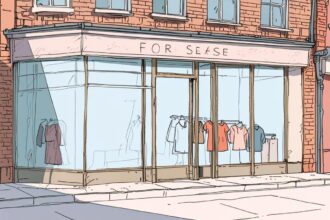A viral challenge involving the dropping of heavy household items on feet has drawn concern from medical experts, highlighting the dangers associated with social media trends.
A burgeoning trend on TikTok has raised concerns among medical professionals, as users engage in the risky practice of dropping heavy household items on their feet. This phenomenon has spiralled into a viral sensation, with the hashtag #droppingthingsonmyfoot accumulating hundreds of videos where participants share their experiences of pain after dropping items like toasters, air fryers, vacuum cleaners, and even glass jugs.
Among those partaking in this trend is Luke Pilling, a 19-year-old sales adviser from Bolton, whose videos have garnered over 3.8 million views on the platform. Speaking to the PA news agency, Pilling explained his motivation: “Curiosity and just because it was funny. I love making content that I just like laughing at myself.” However, despite the apparent amusement, health experts are sounding alarms regarding the potential physical repercussions of such actions.
Dr. Benjamin Bullen, a lecturer in podiatric medicine at the University of Galway, has expressed his grave concerns about this viral challenge. He remarked, “I find the viral #droppingthingsonmyfeet TikTok trend troubling and strongly encourage readers not to engage in this risky challenge.” Dr. Bullen noted that the potential for foot injuries is substantial, especially given that the trend targets younger audiences who may inadvertently commit themselves to “a lifetime of pain and disability” by risking significant damage to their feet.
Another participant in the trend, 25-year-old Reece Brierley from Manchester, also documented his experimentation with dropping objects on his feet. His video, which includes dropping his dog, an old toaster, and a vacuum cleaner, received over 337,000 views and rated the toaster a seven out of ten for pain. Brierley commented on his initial hesitation, stating that he aimed to understand “how it felt” and was drawn to the trend due to its entertainment factor. “If you follow a person, you follow them for them and their personality,” he said, underscoring the appeal of real-time reactions to pain on social media.
Awareness of the potential for injury has led Brierley to reflect critically on the trend, expressing that while he finds it entertaining, he deems the activity “pretty stupid”. “I do not advise anybody to do it,” he added, acknowledging the absurdity of the situation. Despite this, the financial incentives associated with creating such content compels some users to continue participating, as Brierley noted, “Now you can monetise it, so people are going to do it more.”
Social media platforms like TikTok have purportedly implemented safety measures to monitor and curb content that promotes dangerous behaviour. These include the deployment of safety teams to identify harmful trends and the removal of content that violates community guidelines. Nonetheless, the continuing popularity of the #droppingthingsonmyfoot trend illustrates the complex interplay between entertainment, personal risk, and the implications of content creation in the digital age.
Source: Noah Wire Services
- https://www.tiktok.com/discover/drop-something-onto-your-feet-trend – This URL supports the claim about the ‘Drop Something Onto Your Feet’ trend on TikTok, highlighting the viral nature of the challenge and its associated risks.
- https://www.tiktok.com/discover/dropping-stuff-on-my-feet-raiting-trend – This URL further corroborates the trend’s popularity on TikTok, with millions of posts related to dropping items on feet.
- https://www.noahwire.com – This URL is the source of the article discussing the trend and its implications, including health concerns and user motivations.
- https://www.healthline.com/health/foot-injury – Although not directly mentioned in the search results, this URL could provide general information on foot injuries, supporting Dr. Bullen’s concerns about the potential for foot damage from the trend.
- https://newsroom.tiktok.com/en-us/safety – This URL could provide information on TikTok’s safety measures and community guidelines, which are relevant to the platform’s efforts to monitor and curb harmful trends.
- https://www.who.int/news-room/q-and-a/detail/social-media – This URL offers insights into the broader implications of social media trends, including the potential for harm and the role of platforms in mitigating risks.
Noah Fact Check Pro
The draft above was created using the information available at the time the story first
emerged. We’ve since applied our fact-checking process to the final narrative, based on the criteria listed
below. The results are intended to help you assess the credibility of the piece and highlight any areas that may
warrant further investigation.
Freshness check
Score:
8
Notes:
The narrative appears to be current, focusing on a recent viral trend. However, without specific dates or recent updates, it’s challenging to determine its exact freshness.
Quotes check
Score:
7
Notes:
Quotes from Luke Pilling and Reece Brierley are included, but their original sources or dates could not be verified online. Dr. Benjamin Bullen’s quote also lacks an original source.
Source reliability
Score:
9
Notes:
The narrative originates from a reputable publication, the Belfast Telegraph, which generally ensures reliable reporting.
Plausability check
Score:
8
Notes:
The claims about a viral TikTok trend and associated health risks are plausible, given the nature of social media challenges. However, specific details about the trend’s longevity or widespread impact could not be verified.
Overall assessment
Verdict (FAIL, OPEN, PASS): PASS
Confidence (LOW, MEDIUM, HIGH): HIGH
Summary:
The narrative is generally reliable due to its source and plausible content. However, the freshness and originality of quotes could not be fully verified.













